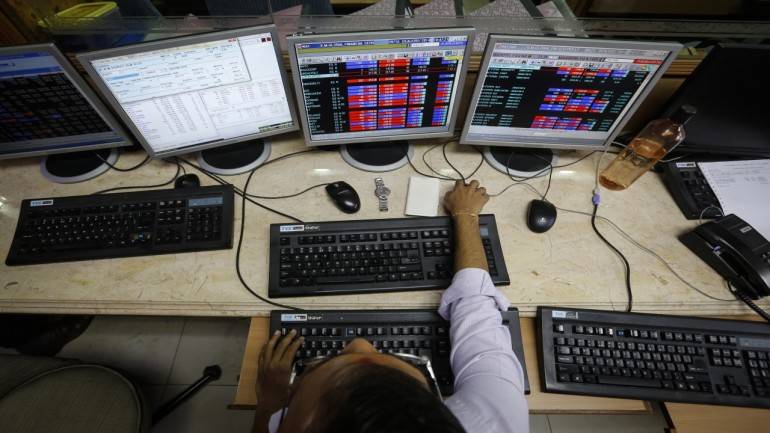The Wedge pattern can either be a continuation pattern or a reversal pattern, depending on the type of wedge and the preceding trend; however most of the time it is a reversal pattern.
Shabbir Kayyumi
When higher lows are being formed faster than higher highs on price charts, it leads to a chart pattern identical to a wedge.
The Wedge pattern can either be a continuation pattern or a reversal pattern, depending on the type of wedge and the preceding trend; however, most of the time it is a reversal pattern.
What is a ‘Wedge’ Pattern?
Wedges form when the prices of a financial instrument move within a narrowing range, angled either up or down. Whereas triangles are formed by the price moving sideways, wedges can make significant progress either up or down.
When the pattern completes, and the price breaks out of the wedge, it is usually in the opposite direction of the wedge and hence called as a reversal pattern.

Figure .1.Illustration of Wedge Chart Pattern

Calculations of target and stop loss
Figure .2. Calculations of Target & Stop Loss in Wedge PatternFormation of Wedge Pattern
• Rising wedges forms where price is contained by two ascending trend lines that converge; however, the lower trend line is steeper than the upper trend line. In other words: the lows are climbing faster than the highs. These wedges give break down after breaching lower trend line.
• The second is falling wedge where price is contained by two descending trend lines that converge because the upper trend line is steeper than the lower trend line. In other words, the highs are falling faster than the lows. These wedges tend to break upwards.
• In order to identify a trend reversal, you will want to look for trends that are experiencing a slowdown in the primary trend. This slowdown can often terminate with the development of a wedge pattern.
• Trend lines are the best way to spot the narrowing of the channel, which is the first key sign that the reversal is on the way ahead.
• These reversals can be quite violent due to the complacent nature of the participants who expect the trend to continue.
Types of Wedge Pattern
In many cases, when the market is trending, a wedge is developed on charts. This wedge could be either rising or falling. Wedges can also appear at the end of a bullish or bearish trend. These formations are regular, find detail explanation below.
1) Rising Wedge Pattern
The rising wedge pattern is characterized by a chart pattern which forms when the market makes higher highs and higher lows with a contracting range. When this pattern is found in an uptrend, it is considered a reversal pattern, as the contraction of the range indicates that the uptrend is losing strength.

Figure .3.Sketch of Rising Wedge Pattern
A rising wedge is formed when price consolidates between upward sloping support and resistance lines.
We have shown an illustration of rising wedge pattern of BANKNIFTY index; however, after a break down, it has reversed to downtrend from its original uptrend as indicated below.

Figure .4.Illustration of Rising Wedge Pattern
2) Falling Wedge Pattern
The falling wedge pattern is characterised by a chart pattern which forms when the market makes lower lows and lower highs with a contracting range. As a reversal signal, it is formed at a bottom of a downtrend, indicating that an uptrend would come next.

Figure .5.Sketch of Falling Wedge Pattern
A falling wedge is generally considered bullish and is usually found in a downtrend. Unlike the rising wedge, the falling wedge gives a bullish breakout.
We have shown an illustration of a falling wedge pattern of NIFTY bench market index; however, after a breakout it has reversed to uptrend from its original downtrend as indicated below.

Figure .6.Illustration of Falling Wedge Pattern
Trading the Wedge Pattern
Trade the breakout or break down; buy above breakout point in falling wedge and short sell below break down point in rising wedge. As with all technical patterns, this breakout of the wedge should ideally occur on above-normal volume. Post pattern implications are sharp or faster fall or faster rise is expected.
Volume and Wedge Pattern
Volume can also add further insight while trading this pattern. Volume is invaluable when confirming any of the two types of wedge pattern break out to upside or downside. As far as volumes are concerned, they keep on declining with each new price advance, indicating that the demand is weakening at the higher price levels.
Volume normally expands at the start of the wedge, contracts as the pattern develops and then expands on the breakout. If the volume isn’t present alongside patterns breakouts, then the resulting trading signal isn’t that reliable.
Conclusion
• A wedge pattern is considered to be a pattern which is forming at the top or bottom of the trend.
• There are two types of wedge patterns either rising or falling wedge.
• The rising wedge pattern signals a possible selling opportunity in an uptrend.
• The falling wedge pattern signals a possible buying opportunity in a downtrend.
The author is head - technical & derivative research, Narnolia Financial Advisors.
Disclaimer: The views and investment tips expressed by investment experts/broking houses/rating agencies on Moneycontrol are their own, and not that of the website or its management. Moneycontrol advises users to check with certified experts before taking any investment decisions.















